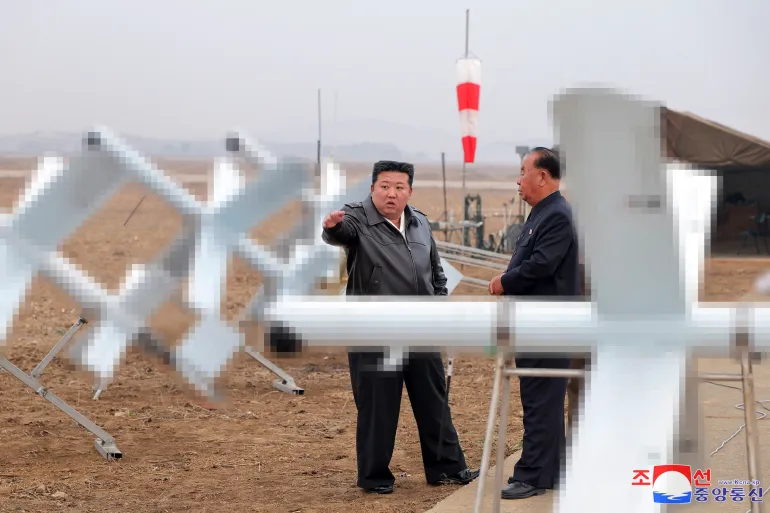
North Korean leader Kim Jong Un has ordered the “mass production” of attack drones, according to state media reports on Friday, amid growing concerns about Pyongyang’s increasing military ties with Russia.
North Korea first unveiled its attack drones in August, with experts suggesting that the development may be linked to the country’s expanding alliance with Russia. Pyongyang has already ratified a landmark defense pact with Moscow and is accused of sending thousands of troops to Russia to assist in its war in Ukraine. These actions have prompted warnings from South Korean President Yoon Suk Yeol, who raised concerns about the potential transfer of sensitive Russian military technology to North Korea.
On Thursday, Kim oversaw tests of drones designed to target both land and sea objectives, which were produced by North Korea’s Unmanned Aerial Technology Complex, the Korean Central News Agency (KCNA) reported. Kim emphasized the need to quickly establish a mass production system and ramp up output.
KCNA described the drones as “suicide attack” devices, capable of carrying explosives and crashing into enemy targets, effectively functioning as guided missiles. The drones reportedly hit targets with precision during the test after flying along predetermined paths.
“The suicide attack drones, designed for various strike ranges, are intended to precisely target enemy positions on land and at sea,” the agency stated.
Kim highlighted the advantages of these drones, calling them “easy to use” and an important addition to North Korea’s military capabilities due to their low production cost and wide range of potential applications. He also emphasized that North Korea had recently prioritized the development of unmanned systems, integrating them into its broader military strategy.
Experts noted that the drones, as seen in state media photos from August, closely resemble the Israeli-made “HAROP,” the Russian-made “Lancet-3,” and the Israeli “HERO 30.” It is believed that North Korea may have obtained this technology from Russia, which in turn could have acquired it from Iran—possibly through hacking or theft from Israel.
In 2022, North Korea launched drones across the border that South Korea’s military was unable to shoot down, citing their small size. More recently, North Korea has been sending balloons carrying trash over the South, claiming it is retaliating against anti-regime propaganda leaflets launched by South Korean activists. Pyongyang has also accused Seoul of violating its sovereignty by flying drones over its capital, Pyongyang, to drop propaganda leaflets.
By emphasizing the “production and practical deployment of various drones,” North Korea may be hinting at its intention to use similar tactics to distribute leaflets to the South, according to Yang Moo-jin, president of the University of North Korean Studies in Seoul. Yang also speculated that the drones, with their demonstrated effectiveness in the Ukraine conflict, could be deployed in the ongoing war there.
In response to the growing drone threat, South Korea established a dedicated drone operations command last year. In October, North Korea amended its constitution to officially declare South Korea a “hostile” state, further escalating tensions that have worsened since Kim Jong Un labeled Seoul as his country’s “principal enemy” in January.
North Korea has continued to defy UN sanctions, conducting ballistic missile tests, and last month destroyed key roads and railways linking the two countries.
